Auswahl und Wartung von 36-V-Golfwagenbatterien leicht gemacht
Um die Leistung Ihres Elektro-Golfwagens zu optimieren, ist die 36-V-Golfwagenbatterie eine der wichtigsten Komponenten. Ob Sie Ihr Batteriesystem aufrüsten, austauschen oder warten – mit dem richtigen Wissen verlängern Sie die Batterielebensdauer, gewährleisten zuverlässige Leistung und vermeiden unnötige Kosten. In diesem Leitfaden erfahren Sie alles Wissenswerte über die Auswahl und Wartung von 36-V-Golfwagenbatterien – von verschiedenen Batterietypen bis hin zu bewährten Wartungspraktiken.
- 36-V-Golfwagenbatterien verstehen
- Wichtige Faktoren, die bei der Auswahl von 36-V-Golfwagenbatterien zu berücksichtigen sind
- Vergleich beliebter 36-V-Golfwagenbatteriemarken
- Wartungstipps für 36-V-Golfwagenbatterien
- So ersetzen Sie die Batterien Ihres 36-V-Golfwagens
- Fehlerbehebung bei häufigen Batterieproblemen
- Kostenaufschlüsselung für 36-V-Golfwagenbatterien
- Verlängerung der Lebensdauer von 36-V-Golfwagenbatterien
- Aufrüstung auf 36-V-Lithium-Golfwagenbatterien
- Umweltaspekte bei 36-V-Golfwagenbatterien
- Häufig gestellte Fragen zu 36-V-Golfwagenbatterien
- Abschließende Gedanken zur Auswahl und Wartung von 36-V-Golfwagenbatterien
36-V-Golfwagenbatterien verstehen
Bevor Sie sich in die Auswahl und Wartung stürzen, ist es wichtig zu verstehen, was 36-V-Golfwagenbatterien sind und wie sie funktionieren.
Was bedeutet 36 V bei Golfwagen?
Ein 36-Volt-Batteriesystem besteht typischerweise aus sechs in Reihe geschalteten 6-V-Batterien. Diese Konfiguration versorgt kleine bis mittelgroße Elektro-Golfwagen mit Strom und zeichnet sich durch ausgewogene Leistung und günstige Preise aus. Obwohl 48-V-Systeme in den letzten Jahren immer häufiger eingesetzt werden, sind 36-V-Golfwagen nach wie vor weit verbreitet im Privat-, Freizeit- und Flottenbereich.
Gängige Batteriechemie für 36-V-Systeme
Es gibt mehrere Batterietypen, die mit 36-V-Systemen kompatibel sind:
Nasse Blei-Säure-Batterien : Am günstigsten, weit verbreitet, erfordern aber regelmäßige Wartung.
AGM-Batterien (Absorbent Glass Mat) : Wartungsfrei, auslaufsicher und vibrationsbeständig.
Lithium-Ionen-Batterien : Leicht, lange Lebensdauer, schnelles Aufladen, aber höhere Anschaffungskosten.
Spannung vs. Leistung
Obwohl die Spannung nicht der einzige Faktor ist, der die Leistungsabgabe bestimmt, kann ein gut gewartetes 36-V-Golfwagen-Batteriesystem ein konstantes Drehmoment und eine ordentliche Reichweite liefern – ideal für flaches oder leicht hügeliges Gelände.
Wichtige Faktoren, die bei der Auswahl von 36-V-Golfwagenbatterien zu berücksichtigen sind
Die Auswahl der richtigen Batterie gewährleistet langfristige Effizienz, Sicherheit und Zuverlässigkeit.
Batteriekapazität und Amperestunden (Ah)
Die Batteriekapazität wird in Amperestunden (Ah) gemessen. Höhere Ah-Werte bedeuten eine längere Laufzeit zwischen den Ladevorgängen. Zum Beispiel:
Lichtverbrauch: 180–200 Ah
Mäßige Nutzung: 200–225 Ah
Schwerlast: 225 Ah und mehr
Art der Nutzung
Überlegen Sie, wie oft und wo Sie Ihren Einkaufswagen verwenden werden:
Verwendung im privaten Bereich : AGM- oder Blei-Säure-Batterien sind normalerweise ausreichend.
Gewerbliche Nutzung oder Golfplätze : Entscheiden Sie sich für Optionen mit höherer Kapazität oder Lithium-Ionen-Akkus.
Hügelige oder lange Strecken : Bevorzugen Sie Batterien mit hoher Entladung und hoher Kapazität.
Batteriegröße und -abmessungen
Stellen Sie sicher, dass die Abmessungen Ihrer neuen 36-V-Golfwagenbatterien zu Ihrem vorhandenen Batteriefach passen. Die Batteriegrößenstandards unterscheiden sich je nach Hersteller, insbesondere zwischen Lithium- und Blei-Säure-Batterien.
Ladekompatibilität
Ihr Ladegerät muss zum Batterietyp passen:
Blei-Säure-Ladegeräte unterstützen möglicherweise keine Lithium-Ionen-Ladeprotokolle.
Durch die Verwendung des falschen Ladegeräts kann die Garantie erlöschen oder Ihr Akku beschädigt werden.
>>Siehe auch: Auswahl der besten Wechselrichtergröße für eine 200-Ah-Lithiumbatterie
Vergleich beliebter 36-V-Golfwagenbatteriemarken
Hier ein kurzer Überblick über einige der am besten bewerteten Optionen:
Trojan
Typ : Blei-Säure
Am besten geeignet für : Lange Lebensdauer, Tiefentladung
Vorteile : Hoher Ruf, solide Verarbeitungsqualität
US-Batterie
Typ : Blei-Säure und AGM
Am besten für : Haltbarkeit und Laufzeit
Vorteile : Hergestellt in den USA, wettbewerbsfähige Preise
RoyPow und Allied
Typ : Lithium-Ionen
Am besten geeignet für : Leichtgewicht, Schnellladeleistung
Vorteile : Smart BMS, Bluetooth-Überwachung
Wartungstipps für 36-V-Golfwagenbatterien
Wenn Sie die 36-V-Golfwagenbatterien in gutem Zustand halten, können Sie deren Lebensdauer erheblich verlängern und Geld sparen.
Regelmäßige Inspektion und Reinigung
Überprüfen Sie die Anschlüsse monatlich auf Korrosion.
Verwenden Sie eine Lösung aus Backpulver und Wasser, um Ablagerungen zu entfernen.
Ziehen Sie lose Verbindungen fest, um Kurzschlüsse oder Ineffizienz zu vermeiden.
Richtige Ladegewohnheiten
Lassen Sie Batterien niemals vollständig entladen.
Vermeiden Sie Zwischenladungen, es sei denn, die Batterien unterstützen dies.
Laden Sie es nach jedem Gebrauch auf und lassen Sie einen vollständigen Zyklus durchlaufen.
Bewässerung (für geflutete Blei-Säure-Batterien)
Überprüfen Sie den Wasserstand wöchentlich.
Verwenden Sie nur destilliertes Wasser – Leitungswasser enthält Mineralien, die die Platten zersetzen.
Erst nach dem Laden füllen, es sei denn, die Platten sind freigelegt.
Lagerung außerhalb der Saison
Kühl und trocken lagern.
Vor der Lagerung auf 100 % aufladen.
Trennen Sie den Akku oder verwenden Sie ein Erhaltungsladegerät.
So ersetzen Sie die Batterien Ihres 36-V-Golfwagens
Der Austausch Ihres Akkus muss nicht schwierig sein. Hier finden Sie eine Schritt-für-Schritt-Anleitung.
Benötigte Werkzeuge und Materialien
Schraubenschlüsselsatz
Batteriegurt oder -heber
Handschuhe und Schutzbrille
Korrosionsschutzspray
Schritt-für-Schritt-Anleitung zum Austausch
1. Schalten Sie den Golfwagen aus und ziehen Sie den Stecker des Ladegeräts.
2. Beschriften Sie alle Kabel, bevor Sie sie trennen.
3. Entfernen Sie alte Batterien mit einem Hebegurt.
4. Reinigen Sie das Batteriefach gründlich.
5. Legen Sie neue Batterien in der gleichen Ausrichtung ein.
6. Schließen Sie die Kabel an und achten Sie dabei auf festen Sitz und die richtige Polarität.
7. Sprühen Sie eine Korrosionsschutzbehandlung auf die Anschlüsse.
8. Laden Sie die neuen Batterien vor dem ersten Gebrauch vollständig auf.
Fehlerbehebung bei häufigen Batterieproblemen
Selbst bei den am besten gewarteten 36-V-Golfwagenbatterien können Probleme auftreten.
Batterie hält die Ladung nicht
Ursache : Sulfatierung oder Zellungleichgewicht
Lösung : Ladung ausgleichen (für Blei-Säure), bei Lithium den Hersteller kontaktieren
Geringe Reichweite oder Leistung
Ursache : Unterspannung, gealterte Batterien
Lösung : Testen Sie mit einem Multimeter und ersetzen Sie schwache Zellen
Aufgeblähte oder auslaufende Batterien
Ursache : Überladung oder interner Fehler
Lösung : Sofort ersetzen; wegen Brandgefahr die Verwendung vermeiden
Kostenaufschlüsselung für 36-V-Golfwagenbatterien
Die Kenntnis der Gesamtkosten hilft bei der Planung besserer Einkäufe.
Vorlaufkosten
Blei-Säure : 600–1.000 $ für einen kompletten Satz
Hauptversammlung : 900–1.200 USD
Lithium-Ionen : 2.000–3.500 $
Instandhaltungskosten
Bewässerungswerkzeuge, Korrosionsspray, Ersatzanschlüsse – etwa 50–100 US-Dollar jährlich für Blei-Säure.
Gesamtbetriebskosten
Lithiumbatterien sind zwar in der Anschaffung teurer, halten aber zwei- bis dreimal länger und sind nahezu wartungsfrei, was die langfristigen Kosten senkt.
Verlängerung der Lebensdauer von 36-V-Golfwagenbatterien
Die Lebensdauer Ihrer Batterie hängt von Pflege, Chemie und Nutzungsmustern ab.
Laden zum richtigen Zeitpunkt
Warten Sie nicht, bis der Akku vollständig entladen ist. Laden Sie ihn idealerweise auf, wenn die Kapazität 30–50 % erreicht hat.
Extreme Temperaturen vermeiden
Batterien verlieren bei Hitze schneller an Leistung und verlieren bei Kälte an Leistung. Verwenden Sie isolierte Gehäuse oder stellen Sie den Wagen nach Möglichkeit in Innenräume.
Verwenden Sie ein Batteriemanagementsystem (BMS)
Stellen Sie bei Lithium-Ionen-Systemen sicher, dass Ihre Batterie über ein BMS verfügt, um Überladung, Überhitzung und Überentladung zu verhindern.
Aufrüstung auf 36-V-Lithium-Golfwagenbatterien
Wenn Sie ein Upgrade in Erwägung ziehen, sollten Sie Folgendes wissen.
Vorteile von Lithium
Schnelleres Laden
Leichtgewicht (bis zu 70 % leichter)
Keine Bewässerung oder Korrosion
Höhere Entladetiefe (80–100 %)
Überlegungen zur Kompatibilität
Prüfen Sie, ob Ihr Motorcontroller Lithium unterstützt.
Installieren Sie bei Bedarf Spannungswandler.
Kaufen Sie ein Lithium-kompatibles Ladegerät.
>>Siehe auch: Die 60-V-20-Ah-Lithiumbatterie verstehen – Ein umfassender Leitfaden
Umweltaspekte bei 36-V-Golfwagenbatterien
Ordnungsgemäße Entsorgung und Recycling sind wichtig für Sicherheit und Nachhaltigkeit.
Recycling alter Batterien
Blei-Säure-Batterien müssen über zertifizierte Recyclinganlagen recycelt werden. Viele Händler bieten Rückkauf- oder Entsorgungsprogramme an.
Lithium-Recycling
Obwohl das Recycling von Lithiumbatterien neueren Datums ist, nimmt es zu. Geben Sie gebrauchte Batterien beim Hersteller oder bei spezialisierten Zentren ab.
Häufig gestellte Fragen zu 36-V-Golfwagenbatterien
Wie lange halten 36-V-Golfwagenbatterien?
Blei-Säure: 3–5 Jahre
Hauptversammlung: 4–6 Jahre
Lithium: 8–12 Jahre
Kann ich alte und neue Batterien mischen?
Davon wird dringend abgeraten. Nicht übereinstimmende Spannungen und Kapazitäten verkürzen die Lebensdauer der neuen Batterie und führen zu einem Ungleichgewicht.
Wie oft sollte ich die Batterie meines 36-V-Golfwagens aufladen?
Laden Sie die Batterie nach jedem Gebrauch auf, auch wenn sie nur teilweise entladen ist. Regelmäßiges Laden hilft, die Kapazität zu erhalten und verhindert Sulfatierung.
Abschließende Gedanken zur Auswahl und Wartung von 36-V-Golfwagenbatterien
Die Wahl der richtigen 36-V-Golfwagenbatterien ist die Grundlage für zuverlässige Leistung und Langlebigkeit. Vom Verständnis der Batteriechemie bis hin zur Implementierung intelligenter Wartungsroutinen können diese Schritte Ihnen Geld sparen und die Lebensdauer Ihres Golfwagens deutlich verlängern. Ob Sie bei Blei-Säure bleiben oder auf Lithium umsteigen, fundierte Entscheidungen zahlen sich immer aus.
Zusammenfassend lässt sich sagen, dass die Wartung von 36-V-Golfwagenbatterien nicht kompliziert sein muss. Mit den hier geteilten Tipps und dem Wissen sind Sie nun in der Lage, intelligentere Entscheidungen zu treffen und eine ruhigere Fahrt zu genießen.

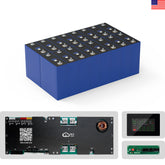

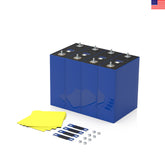

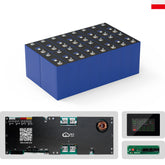

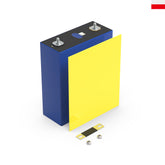

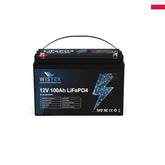
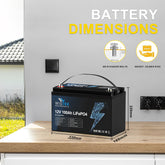
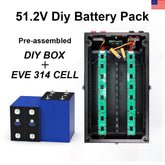

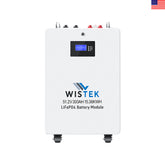
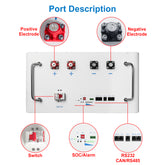
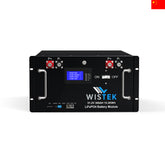
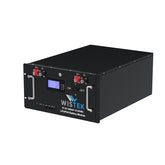


Leave a comment
All blog comments are checked prior to publishing